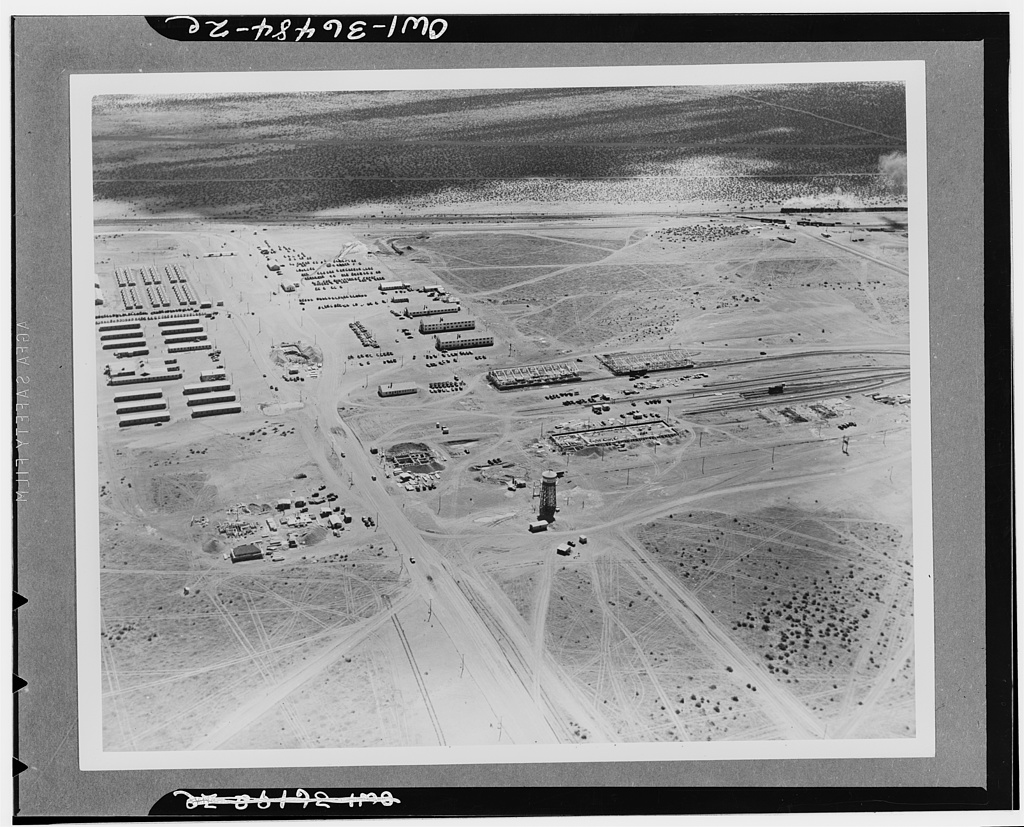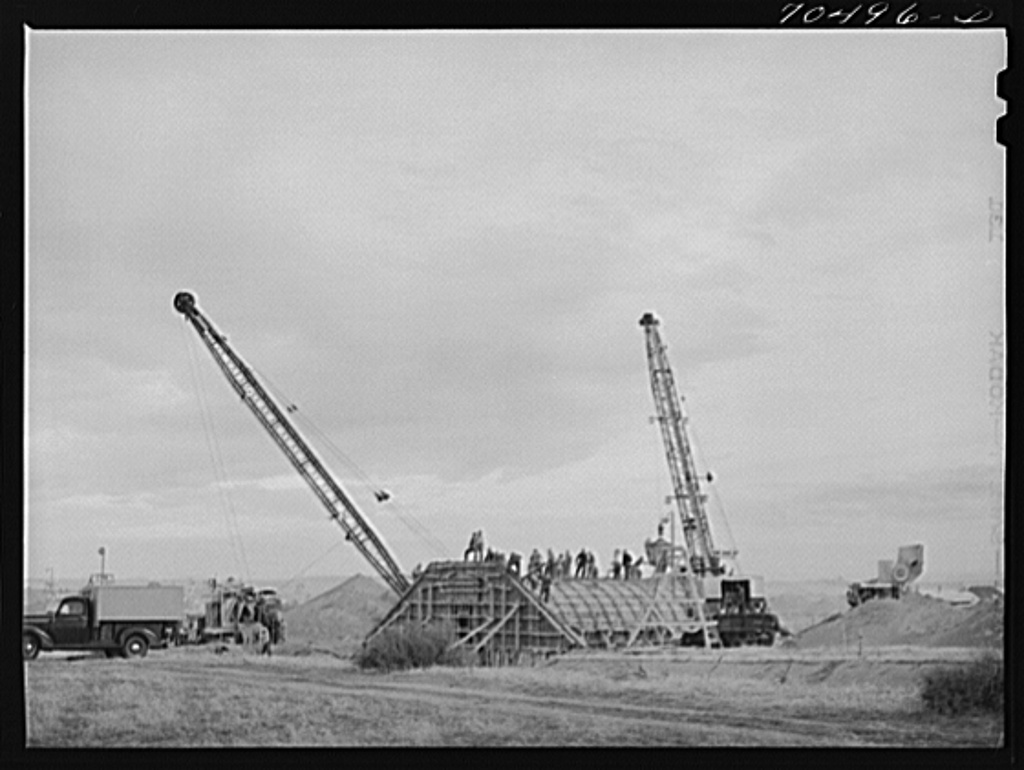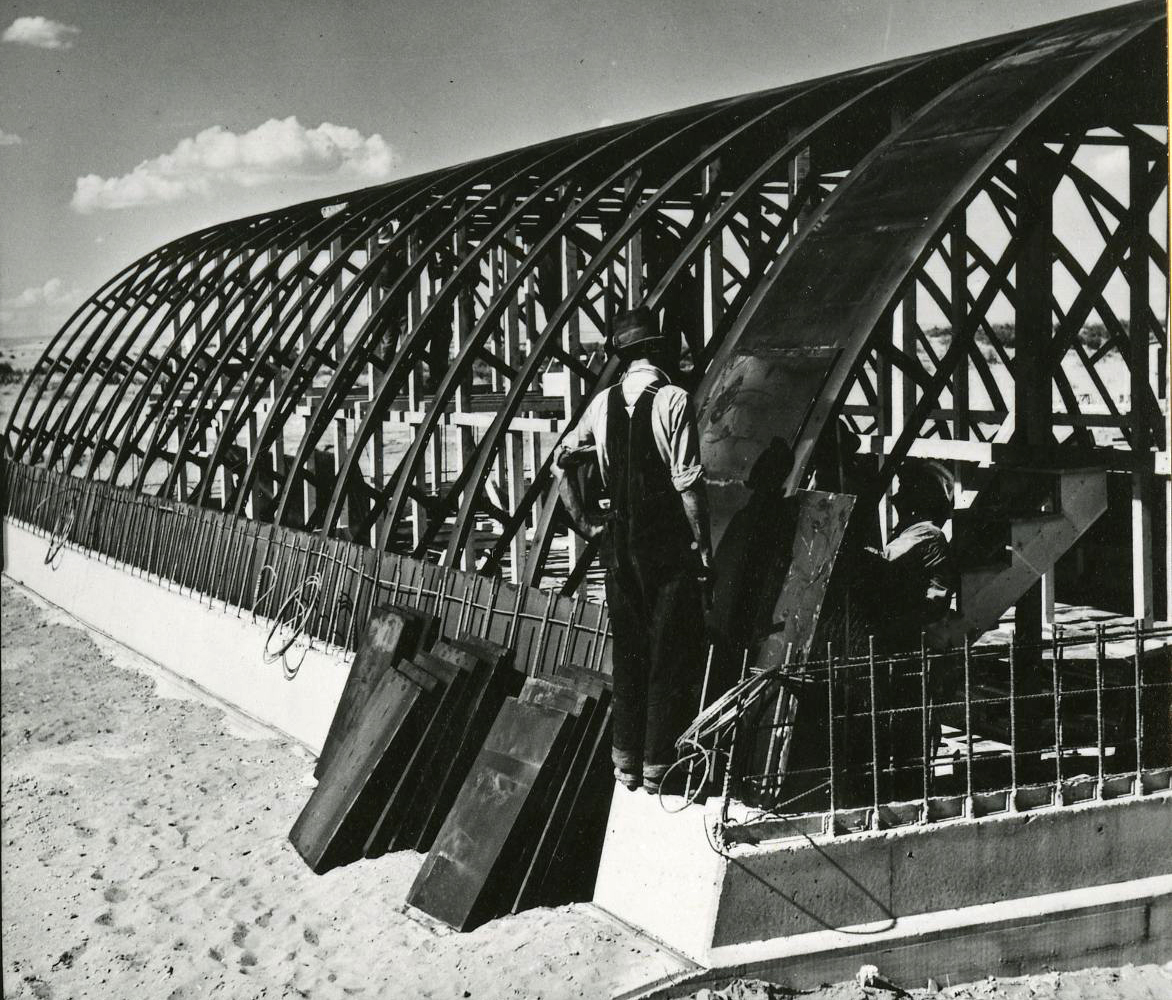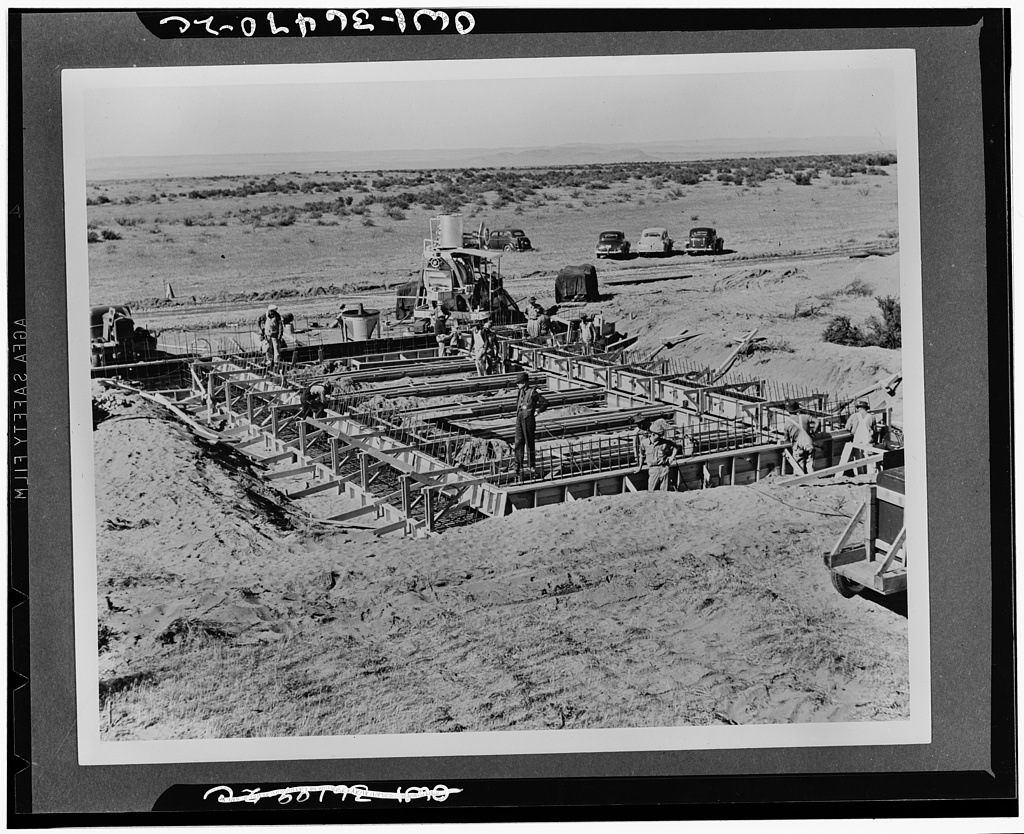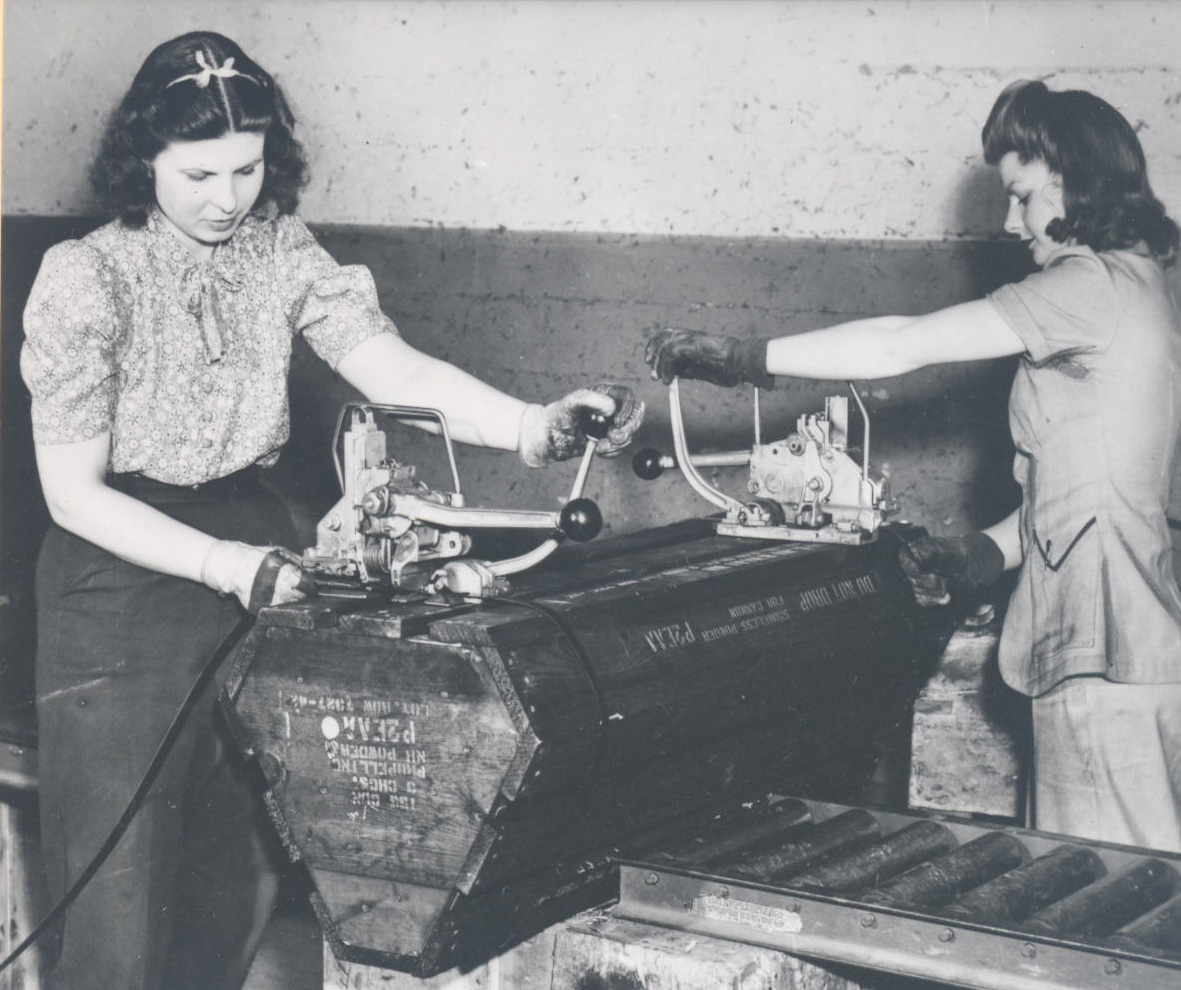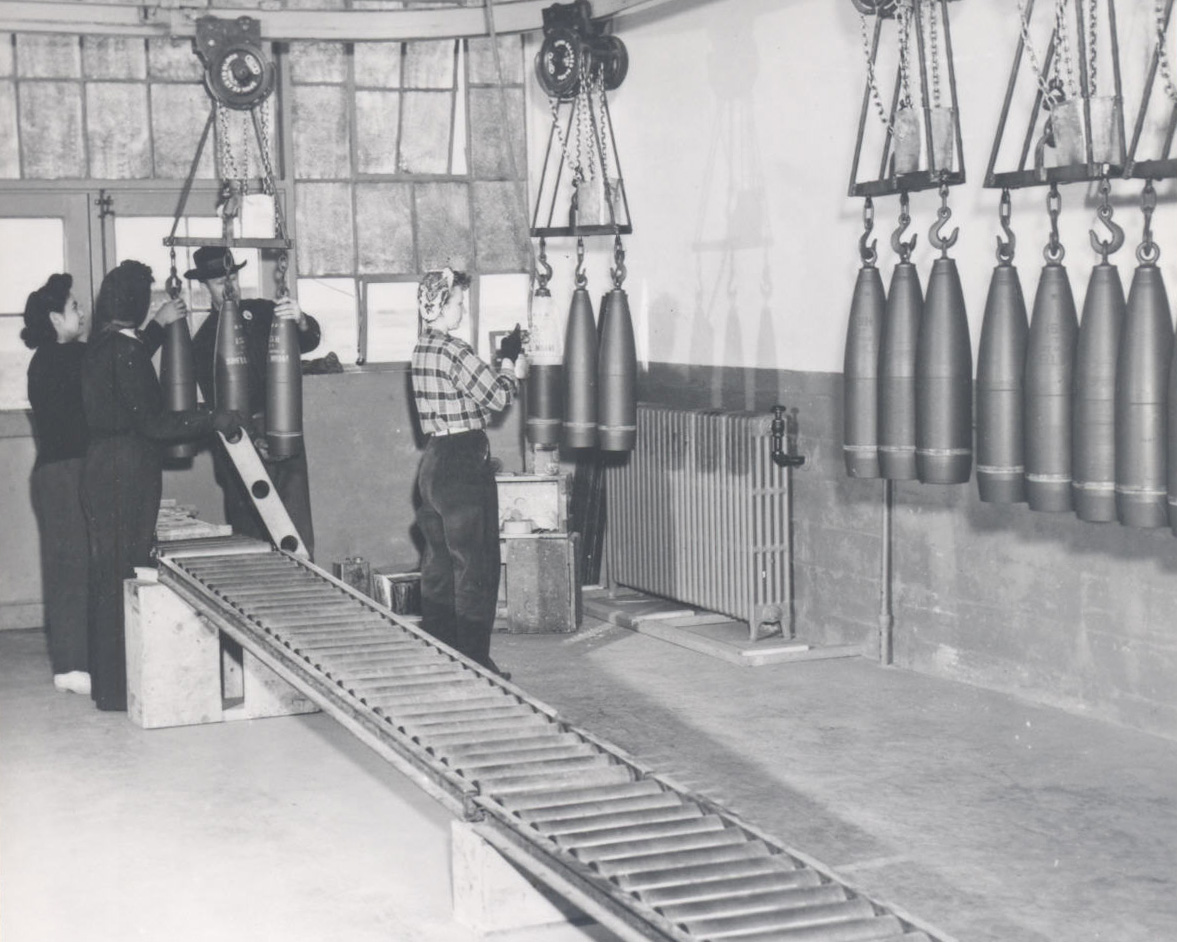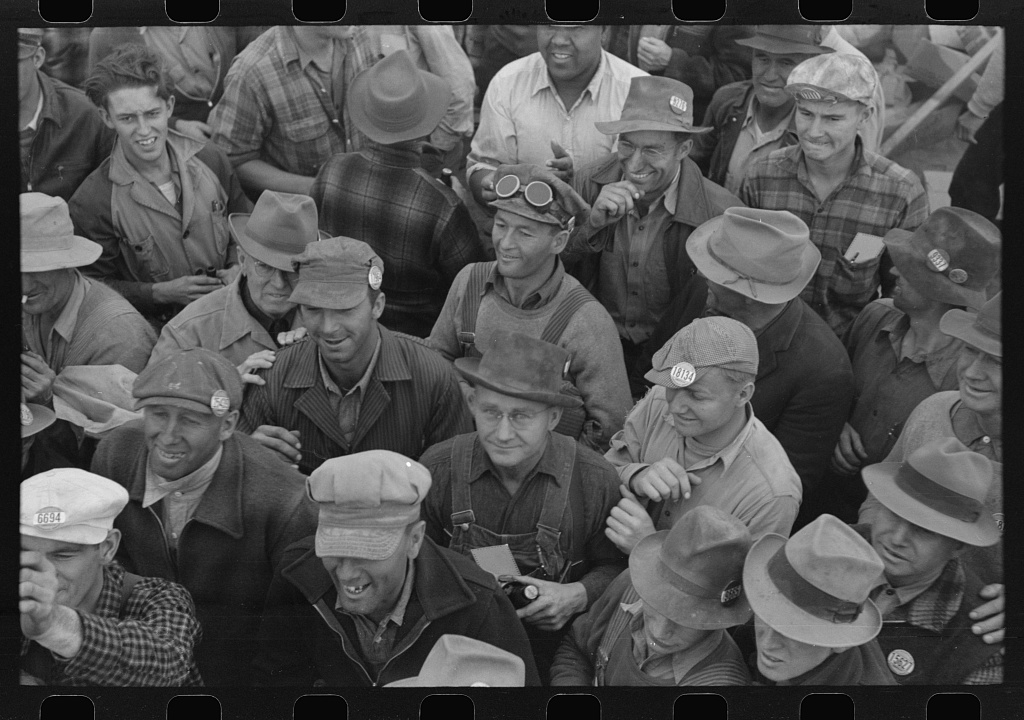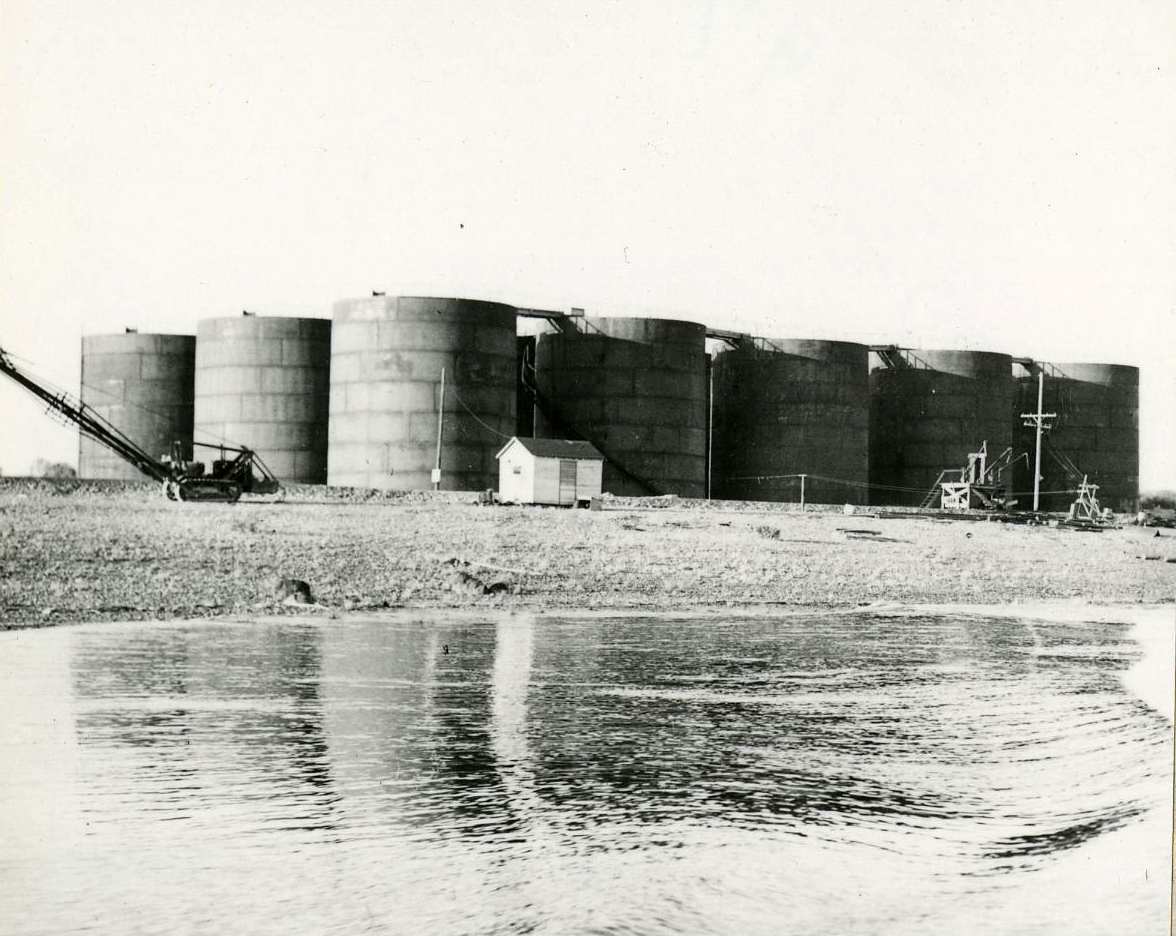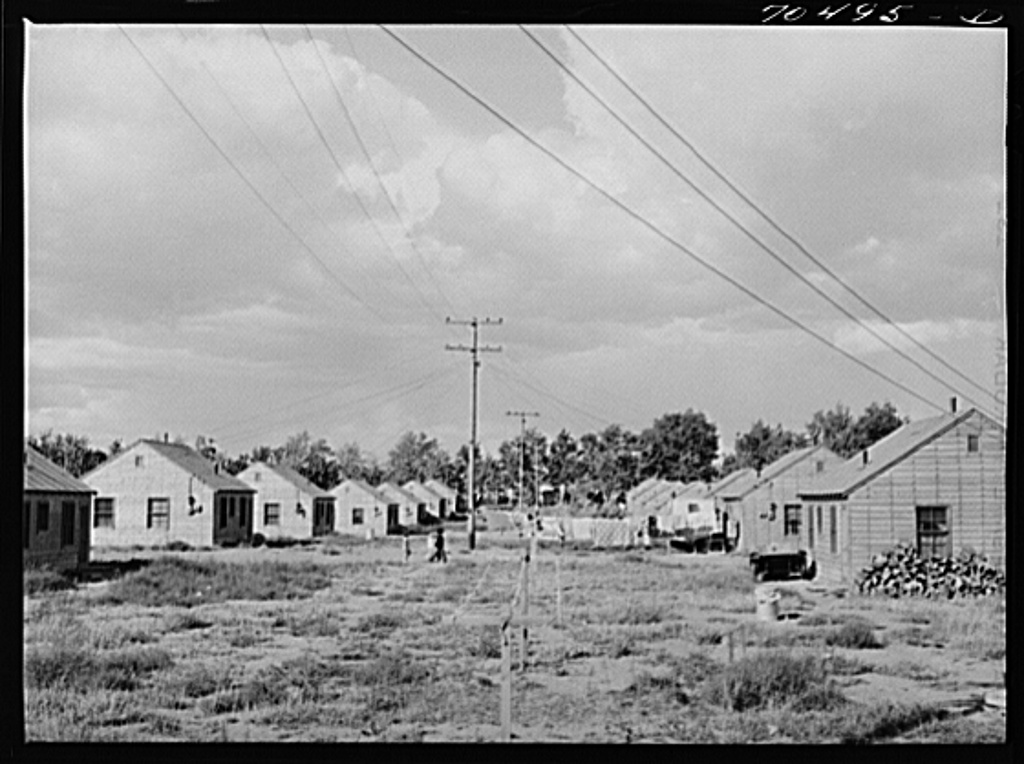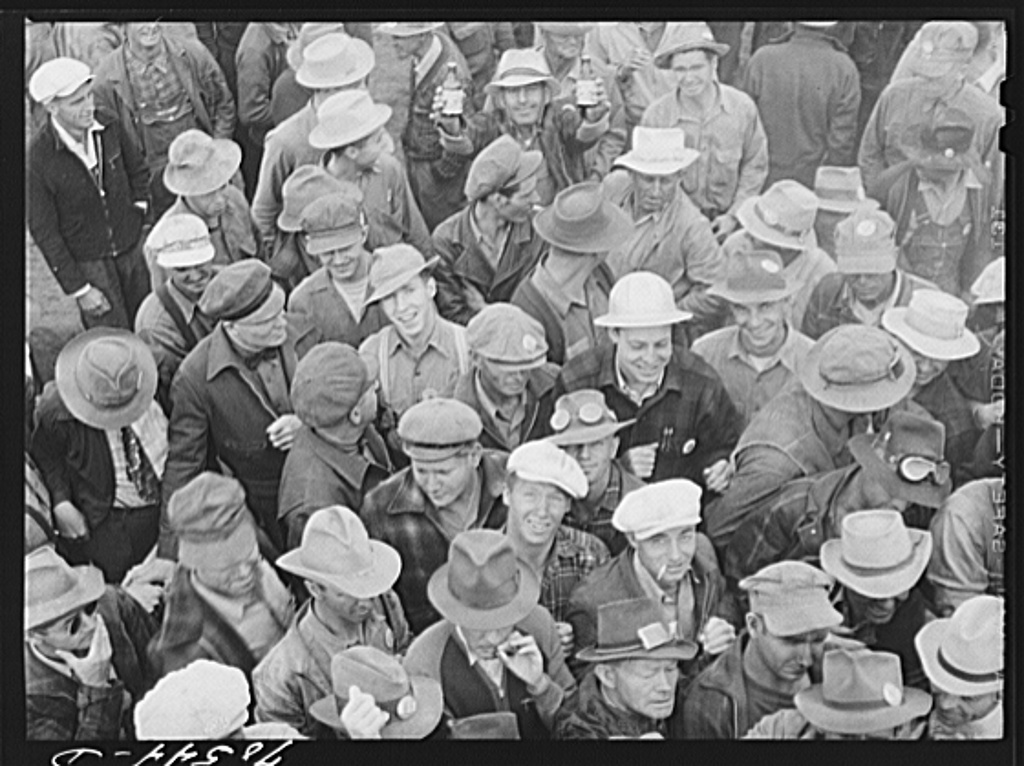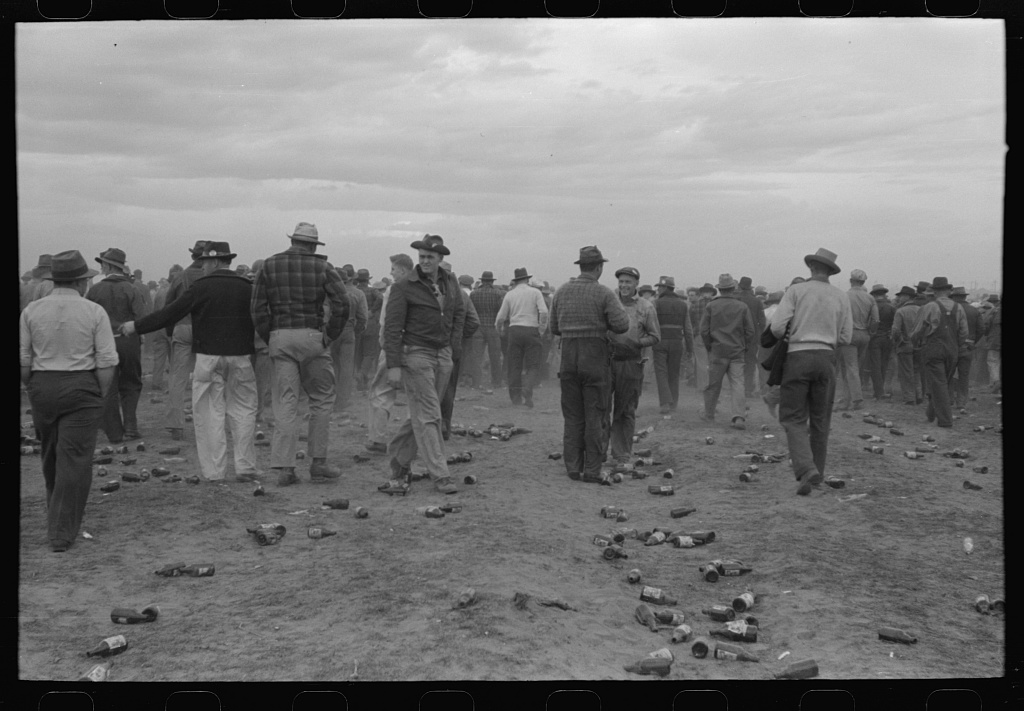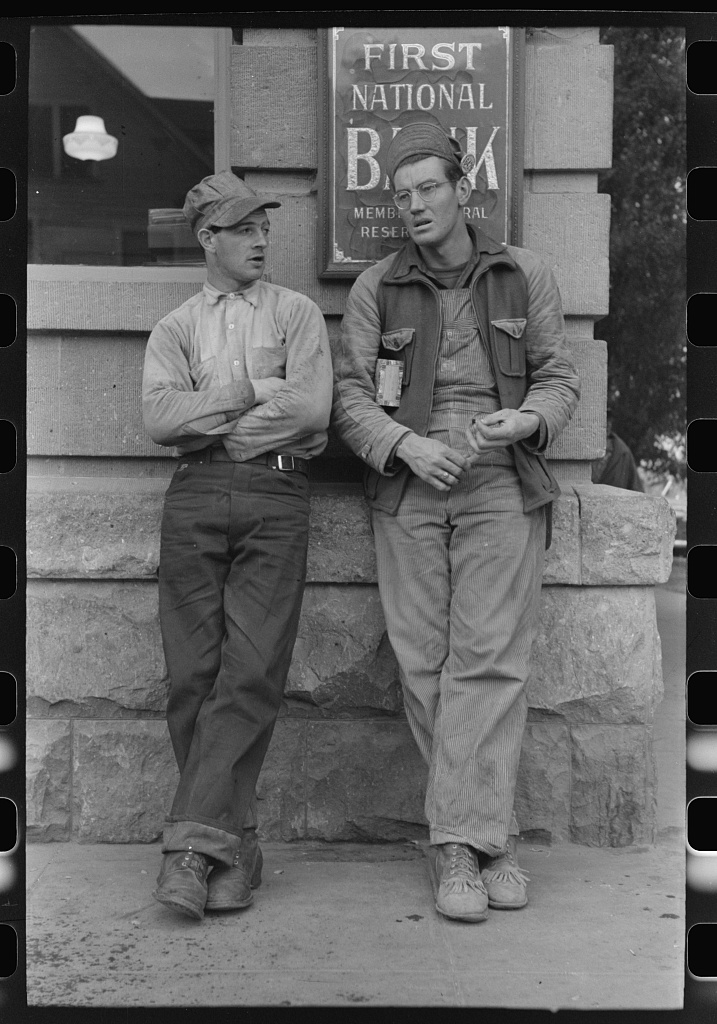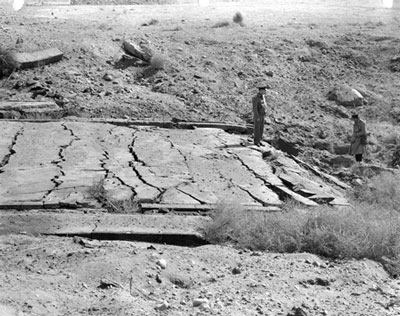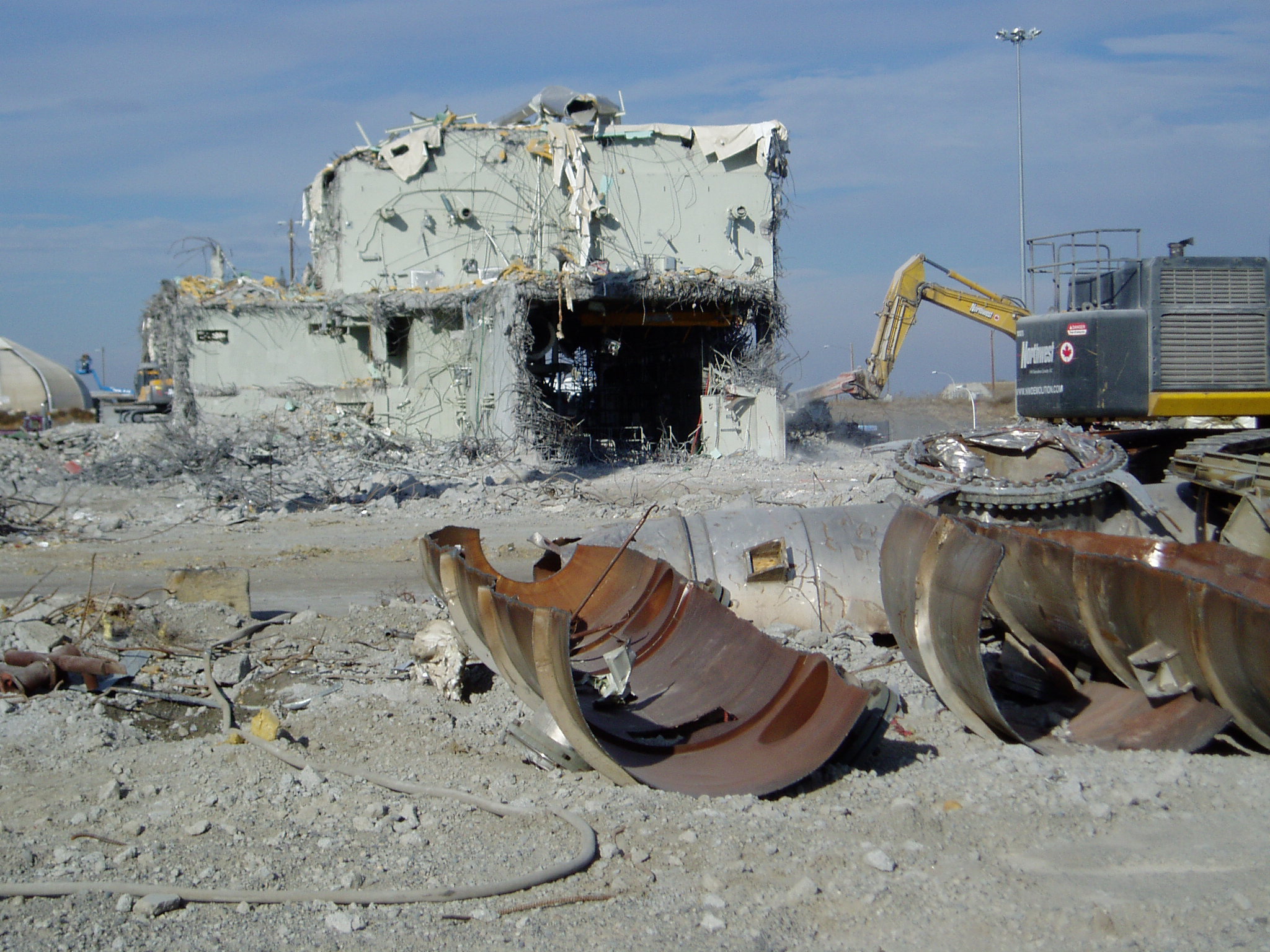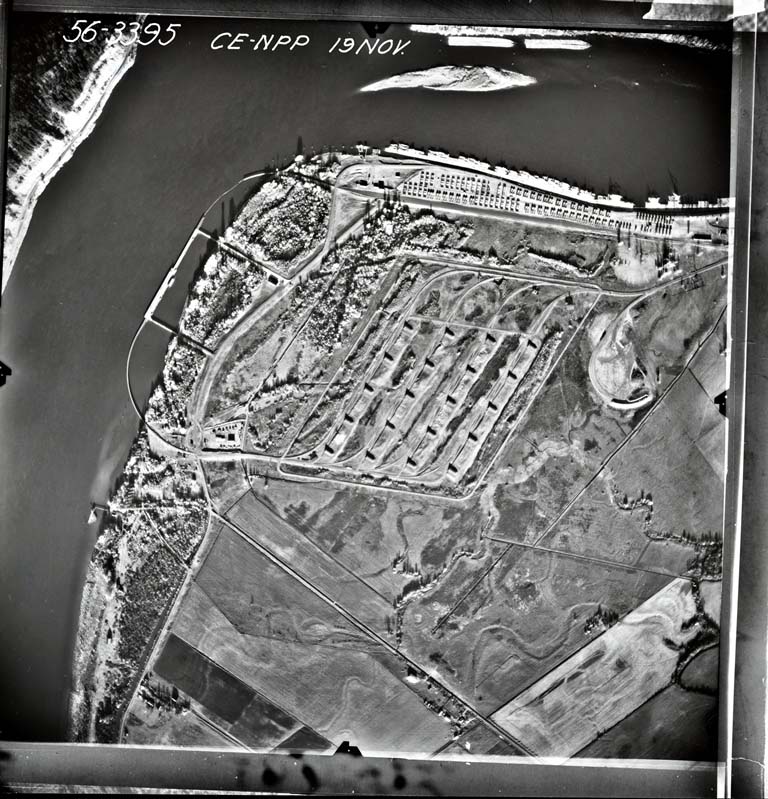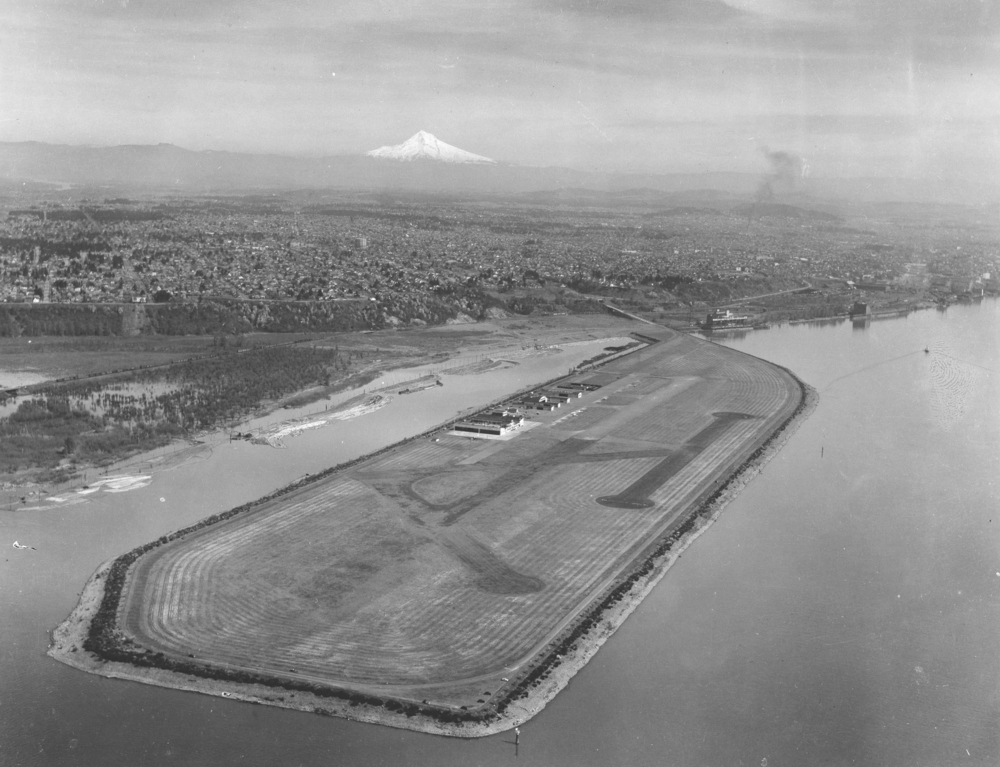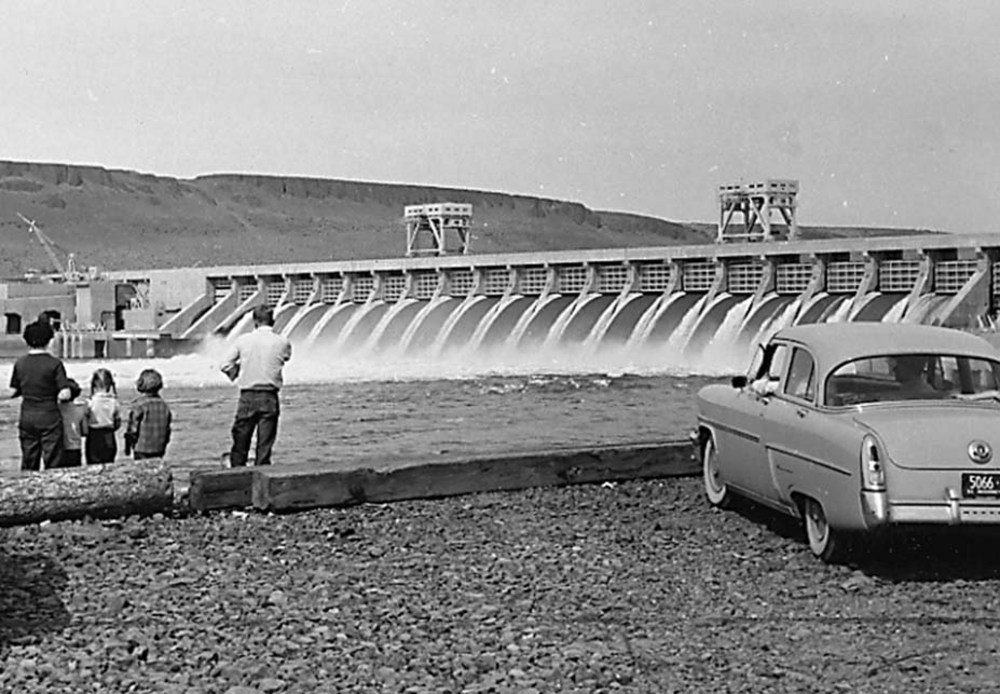In 1940, the U.S. Army identified twenty thousand acres straddling the Umatilla and Morrow county line, eight miles west of Hermiston, as the site for a military munitions and supply depot. The Umatilla Army Ordnance Depot stored and supplied munitions to the army until the early 1990s. Between 1962 and 1969, chemical weapons were received and stored at the depot; and from 1996 to 2012, under the name Umatilla Chemical Agent Disposal Facility, the depot was the site of the destruction of those weapons.
Construction of the depot began in January 1941, with J.A. Terteling and Sons Construction Company as the primary civilian contractor. The site was chosen because it was safe from sea attacks and it was close to railroad lines and a port on the Columbia River. North-central Oregon's relatively mild climate, low humidity, and sparse population were also factors in the selection. At the peak of construction, seven thousand men worked three shifts a day building munitions storage bunkers, barracks, a headquarters, base housing units, warehouses, workshops, a fire station, and a railroad engine house.
The Umatilla Army Ordnance Depot was opened on October 14, 1941, when the depot was officially designated a military reservation. On October 27, the first shipment of twenty thousand bombs arrived by rail for storage. In late fall, the initial civilian contracts were completed, and the Army Corps of Engineers took over supervising various contractors as building continued at the depot. The total cost of construction was $35 million.
A thousand and one munitions storage bunkers, called igloos, dominate the depot landscape and can be seen on the north side of I-84 and to the west of I-82. As of 2015, nearly all of them are empty. Constructed in rows, the larger igloos are 30 by 80 feet, and the smaller ones 24 by 61 feet. The ends and sides are ten inches of reinforced concrete, covered with two feet of dirt. The concrete tops were constructed so that the force would be directed upward if an explosion occurred. The igloos, which are typical of storage bunkers at other installations, were constructed at a rapid rate. A world construction record was set on September 24, 1941, when twenty-four were poured in one day.
The depot employed two thousand workers during World War II, 27 percent of them women. The civilian women ordnance workers, or WOWs, did most of the jobs that male employees did, from driving trucks and forklifts to building crates and handling munitions. The only fatal accident at the depot occurred on March 21, 1944, when a bomb being loaded into an igloo exploded, killing six workers. A deep crater marks the site today, and the largest piece of concrete from the igloo is in front of the administration building with a plaque as a memorial to the event.
After World War II ended, the depot continued to store and supply munitions. During the Korean Conflict, as many as fifteen hundred workers handled nearly thirty-four tons of ammunition and other military supplies each month. In 1962, the installation’s name was changed to the Umatilla Army Depot, and it began receiving and storing chemical weapons, which continued to arrive until 1969. The chemical warfare agents VX and GB (nerve agents) and HD (mustard blister agent) were stored as liquid in various types of munitions and containers, including rockets, bombs, projectiles, mines, bulk containers, and aerial spray tanks. In 1988, the Umatilla Army Depot was placed on the federal Base Realignment and Closure list for the on-site destruction of its chemical weapons.
While none of the chemical weapons stored at the Umatilla Army Depot were shipped to any wars or areas of conflict, conventional ammunition weapons were shipped during the Vietnam War, and nearly 20,000 tons of conventional ammunition were supplied to Desert Storm in 1991. In 1994, the depot shipped the last of its conventional ammunition and supplies to other depots. In 1996, the depot’s name was changed to the Umatilla Chemical Depot, and approximately 12 percent of the nation’s chemical munitions were stored there.
From 1989 to 1996, the federal government held public hearings in Oregon, took public comments, and arranged for environmental impact statements regarding the site. At the end of the lengthy public process, the Umatilla Chemical Agent Disposal Facility was constructed, completed in 2001 at a cost of $395 million. The purpose of the facility was the destruction of the chemical weapons stored at the depot. The incineration plant was managed by the federal contractor URS Corp. Chemical weapons disposal began in 2004 using high-temperature incineration technology.
An Emergency Operations Center at the depot and other centers in Umatilla and Morrow Counties were established to inform the public of chemical incidents. No incidents occurred, although sirens occasionally went off caused by operator error. During incineration, 220,604 munitions and 3,720 tons of chemical weapons were safely destroyed. Incineration was completed in October 2011, the incineration plant was demolished, and the depot was closed on August 1, 2012. The total cost of the project is estimated at $2.7 billion.
In addition to the chemical incineration, a Superfund cleanup project at the depot pioneered the use of microbes in cleaning up soils and water contaminated by explosives. The U.S. Army plans to transfer the depot land to the Columbia Development Authority, a coalition of local and tribal governments. About 7,500 acres will be used by the Oregon National Guard for training, 5,700 acres will be a wildlife preserve, and the remainder will be sold or leased for industrial and agricultural use. The depot's collection of documents, photographs, and artifacts will be archived at the Umatilla County Historical Society's Heritage Station museum in Pendleton.
-
![]()
Aerial of Hermiston Blocks 2-5 at depot, 1941.
Courtesy Library of Congress, 8e01634v -
![]()
Aerial of depot headquarters, 1941.
Courtesy Library of Congress, 8e01641v -
![]()
Row of ammunition igloos, 1941.
Courtesy Oregon Hist. Soc. Research Lib., 013045
-
![]()
Depot igloo under construction, 1941.
Courtesy Library of Congress, 8c22711v -
![]()
Men work on the steel-enforced concrete igloo, 1941.
Courtesy Oregon Hist. Soc. Research Lib., 013046
-
![]()
Igloo number 5F18 under construction, 1941.
Courtesy Library of Congress, 8e01627v -
![]()
Women at the depot bundling ammunition, 1943.
Courtesy Oregon Hist. Soc. Research Lib., 005719
-
![]()
Depot workers, 1941.
Courtesy Library of Congress, 8a30637v, Russell Lee photographer -
![]()
Women stencil and inspect shells, 1943.
Courtesy Oregon Hist. Soc. Research Lib., 005720
-
![Workers celebrated after pouring concrete for 24 igloos in 24 hours.]()
-
![]()
Army tank farm in Umatilla County.
Courtesy Oregon Hist. Soc. Research Lib., 003136
-
![]()
Contractor-built housing at depot, Hermiston, 1941.
Courtesy Library of Congress, 8c22710v, Russell Lee photographer -
![]()
Umatilla Ordnance Depot workers, 1941.
Courtesy Library of Congress, 8c22759v, Russell Lee photographer -
![Workers celebrated after pouring concrete for 24 igloos in 24 hours.]()
Aftermath of the beer party, 1941.
Workers celebrated after pouring concrete for 24 igloos in 24 hours. Courtesy Library of Congress, 8a30618v, Russell Lee photographer -
![]()
Depot workers in Hermiston, 1941.
Courtesy Library of Congress, 8a30644v, Russell Lee photographer -
![]()
Remnants of exploded munitions, 1944.
Courtesy Umatilla Depot Outreach Office
-
![]()
Dismantling the depot, c. 2010.
Courtesy Oregon Department of Environmental Quality
Related Entries
-
![Beaver Army Terminal Dock]()
Beaver Army Terminal Dock
The Beaver Ammunition Storage Point Depot (BASP) was located at Port We…
-
![Swan Island]()
Swan Island
Swan Island sits about eight miles above the mouth of the Willamette Ri…
-
![U.S. Army Corps of Engineers]()
U.S. Army Corps of Engineers
The U.S. Army Corps of Engineers, a hybrid military and civilian federa…
Related Historical Records
Map This on the Oregon History WayFinder
The Oregon History Wayfinder is an interactive map that identifies significant places, people, and events in Oregon history.
Further Reading
Manny, Bill, Sr. “Arsenal in the Desert.” Pioneer Trails 15.1 (Spring/Summer 1991): 9–19. Reprinted in Susan Badger Doyle, ed., Collected Memories: Umatilla County at 150 (Pendleton, Ore.: Umatilla County Historical Society, 2012): 169–75.
“Columbia Development Authority.” http://www.umadra.com/
Hogan, Lori. "Oregon Army National Guard recognized for preservation efforts at Camp Umatilla." U.S. Army. March 12, 2021.
“Umatilla Army Depot.” http://www.militarybases.us/army/umatilla-army-depot/


